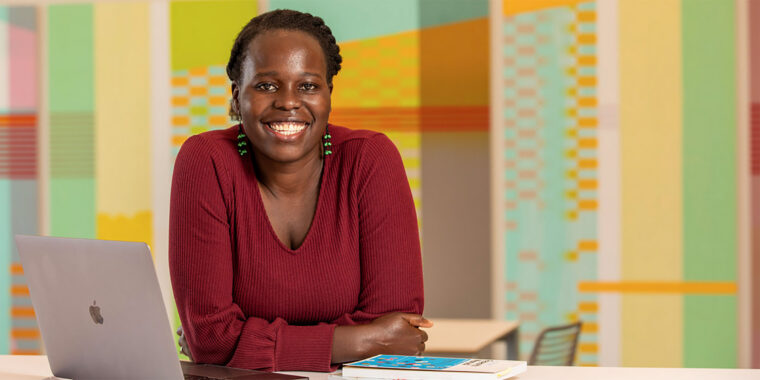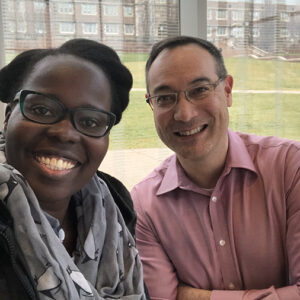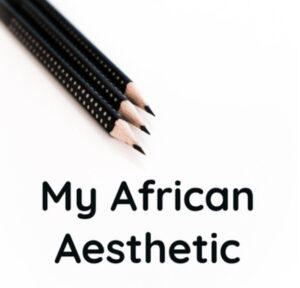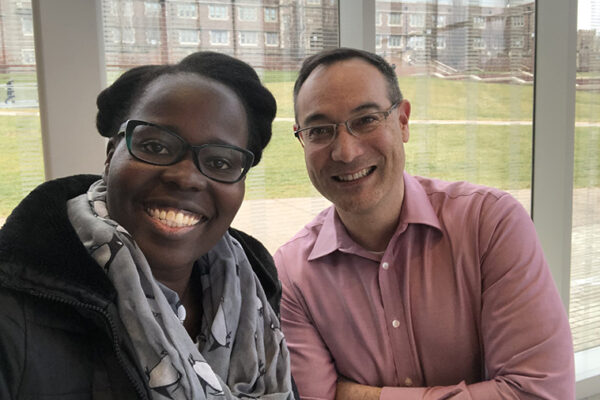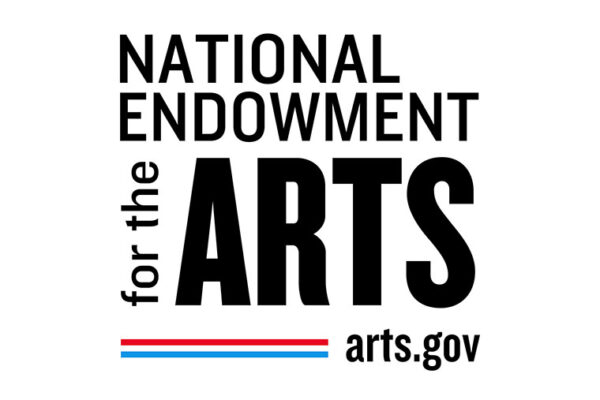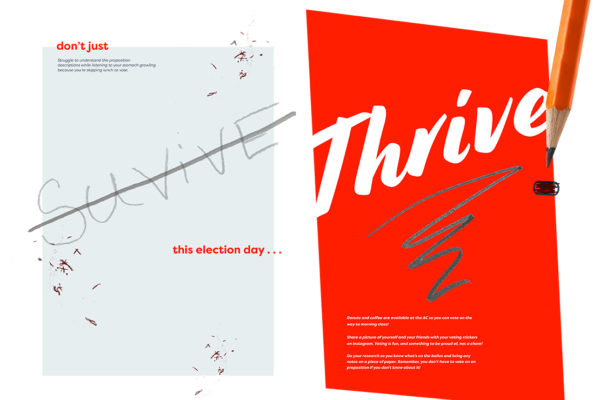Social change is messy. It happens in fits and starts. Obstacles can seem insurmountable until the moment they don’t.
Design is messy, too. Like social change, good design is rooted in empathy and trust. It aims to understand particular problems and offer tangible solutions. It recognizes the importance of individual agency while also grappling with the effects of powerful systems.
Last fall, the Sam Fox School of Design & Visual Arts at Washington University in St. Louis launched a new interdisciplinary minor in creative practice for social change. In this Q&A, program advisor Penina Acayo Laker, assistant professor of communication design, discusses the minor and what the design process can teach us about enacting positive change.
Your work frequently touches on medical communication design. You also founded the workshop series DesignEd Uganda and, last spring, co-taught “Law, Race, and Design: Examining the St. Louis Story” with the School of Law’s John Inazu. How did you go about developing the creative practice for social change minor?
The approach comes from my own research and practice, which are rooted in ideas about human-centered design and designing for social impact. I try to identify the nexus where design and social issues meet.
In approaching this minor, I wanted to be very intentional in bringing together disciplines in which I’m not an expert. I wanted to start with places of commonality, such as the built fabric and cultural histories of our cities; and to pay attention to the roles of art, architecture and design. But I also wanted to look at other models of change, from social entrepreneurship and innovation to nonprofit organizations. I think it’s important to peel back all those layers.
You teach the minor’s core seminar, “Design in Social Systems.” Can you describe that class?
We look at historical and contemporary contexts for socially engaged work within art and design disciplines. Students explore different processes that artists and designers have used to address, influence and inspire change around systemic social issues. Each week, we highlight a particular creative practice and hear from an expert who works in that field. Students also apply a “systems-thinking approach” to a select number of real-world social issues; and complete a final group project, in partnership with a local community organization.
Over the past decade or so, a number of schools have established programs focusing on design and social change. What’s unique about the Sam Fox School’s program?
A couple of things. First, a lot of programs are situated primarily within an architecture school, or a design school, or an art school. But the Sam Fox School is organized in such a way that we’re able to make sure all three disciplines are participating in the conversation. It’s more holistic and allows us to really dive into how practices of the built environment, community-based work and public art intersect.
It’s also hard to think about creative practice and social change without thinking about the kind of university and the kind of students who’ll be engaged. WashU students are smart and curious. They bring a wide variety of perspectives and are able to maintain deep dives into topics that interest them. That makes for a truly multidisciplinary engagement. Students from pre-med, business and environmental studies come together with artists and architects not just to learn creative practices, but also to learn to critique those practices and to examine how we might benefit from other adjacencies.
Last question. Between COVID-19, the police brutality protests and the coming presidential election, 2020 has been a tumultuous year. How do you think this program speaks to the current moment?
It’s hard to ignore today’s polarized landscape. There are so many social, political and environmental issues that we’re all grappling with. Everything feels so heightened and scary.
I think in times like these, leaning on new creative approaches can help us — not necessarily to “solve” the big issues, but to give people a different lens through which to look at them. The world today feels smaller, due to technology and globalization, and digesting information primarily through social networks and the media can be alarming.
Creative practice is socially driven, but it also can provide moments of reflection and pause. It allows students to really consider how they want to leave their mark on the world.
The minor in creative practice for social change is supported by the Sam Fox School’s Office for Socially Engaged Practice. For more information, visit samfoxschool.wustl.edu.
